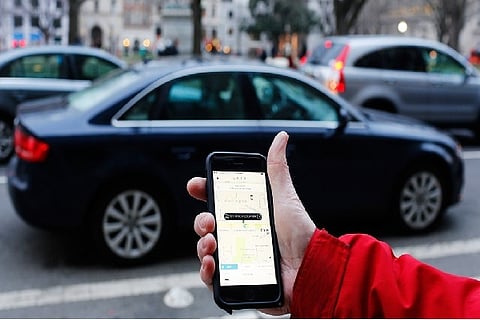

There are more chances of Uber ride requests not getting completed in Bengaluru compared to any other city in India during peak hours. According to Uber, 40% of ride requests on Uber during peak hours in areas of high demand are not fulfilled. Compared to this, in Hyderabad, the completion rate is much higher closer to 80% under very similar conditions as found by the company’s data science team.
The number of unfinished rides includes cancellations made both by the driver and riders due to longer waiting times.
For this, Uber claims that the existing policy of the Karnataka government which does not allow surge pricing beyond 2x and pricing based on the time taken for the journey is to blame.
“For a vehicle in Karnataka which costs Rs 5-10 lakh which is the bulk of the fleet, riders can’t be charged more than Rs 24/ km + GST. Second, there can’t be any time component as well. From a driver’s side, there is lower motivation to drive during the peak hours as there is more fuel expenditure and more time spent but not getting compensated adequately,” Prabhjeet Singh, Head of Uber India and South Asia, said during an interaction with reporters on Thursday.
“So, for example, for a 4-km ride Uber cannot charge more than Rs 100 even when the customer may be willing to pay. This results in on average 15-18% lower income for a driver in Bengaluru compared to any other driver doing the same hours of work in any other city. On top of that, the cost of operations in Bengaluru is much higher due to the low availability of CNG infrastructure in the city compared to others,” he added.
For Bengaluru, this peak demand area is mostly concentrated in the Central Business District (CBD) and the IT corridor in the eastern fringes of the city.
Bengalureans have been experiencing longer waiting times or not getting a cab at all during office hours. The experience by commuters is similar for Ola as well, with both companies subjected to the same regulations. However, Ola refused to comment on the specific issue.
Prabhjeet Singh explained that in Hyderabad the surge pricing may go as high as Rs 35/km which might motivate the driver to go through heavy traffic, while the commuter is ready to pay that. So, Uber says the waiting time and availability of cabs in Hyderabad is much better.
Uber argues that due to the cap on surge pricing in Karnataka, more drivers are willing to sit out during peak hours when they feel that they won’t make enough money. This, in turn, the company says is leading to a rise in private vehicles on Bengaluru’s roads, increasing congestion.
However, a recent paper by San Francisco County Transportation Authority (SFCTA) in the US stated that cab aggregators like Uber were responsible for the growth of more than half of the cars in the city. Similar studies done in other cities like London, New York and Boston show the same results.
The trend can also be traced in Bengaluru with the rising percentage of cabs registered in the city. According to the Karnataka Transport Department, the number of cabs added per year has increased to 1,70,000 for 2018-19 from 80,000 in 2014-15.